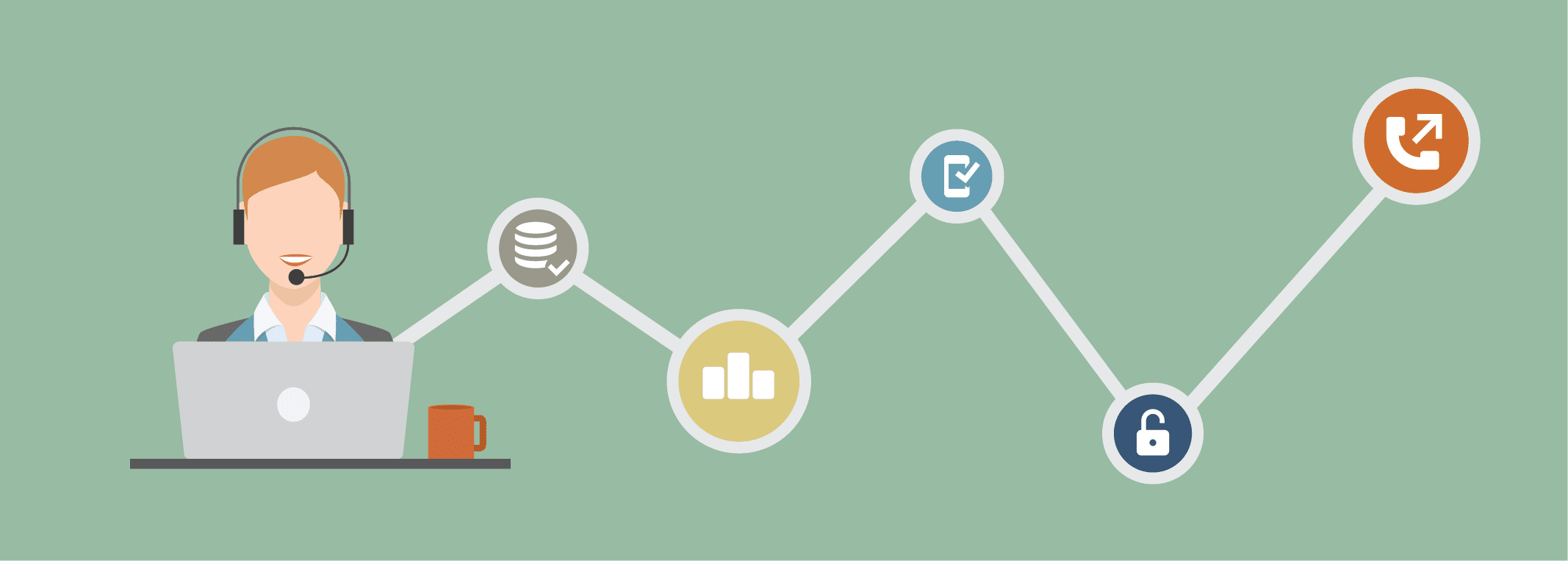4 Ways an ACD System Shortens Call Time and Increases Agent Availability
What are 2 ways to optimize call centers?
Shorten call times and increase agent availability.
Simple. But not easy.
Unless…
Call centers have the right technology.
Something like… A piece of software that intercepts calls and automatically moves callers to the right place or the right agent.
That’s precisely what an ACD system can do.
4 Ways an ACD System Increases Agent Availability and Shortens Call Time
1. Various Distributions
Every call center configures their ACD system in the way that distributes the calls in the “best way” for them.
There are numerous factors for determining the appropriate configuration, such as:
- Time of day
- Call traffic
- Origin of the phone number
- Agent skills, etc.
Based on the above factors, call centers can choose a variety of ways to distribute calls. Here’s a list of some of the most common ways:
- Programmed Distribution – This is when a call center creates a custom distribution for their call center based on languages spoken by their customer, experience of the agent, and a host of other considerations.
- Round-Robin Distribution – This is when a call center distributes calls to agents in a specific order. The first call will go to the first agent in the order and every call thereafter will go to the next agent. This is used often to prevent agent burnout (a symptom of overburdening agents with too many calls).
- Idle-Agent Distribution – This is when the ACD System identifies agents who have taken the fewest calls in the call center and who can handle the next incoming call.
- Weighted Call Distribution – This is when agents in the call center are given a “weight” that is based on their skills, seniority, expertise, or other characteristics.
2. Call Routing
ACD systems can be programmed to route incoming calls for specific purposes, depending on who the caller is and what they need.
To make this work, you need to have an Interactive Voice Response (IVR) system installed. This is what customers will interact with first. The IVR will present them with options and depending on their choice, the ACD will route them to the appropriate agent.
For example, if the IVR detects a number from a certain region of the world, like Mexico, then the call will be directed to an agent who speaks Spanish, perhaps even a call center in that area (if they have multiple call center locations).
Of course, call centers can elect to turn their IVR off.
Example: From 9am-5pm, all calls are routed directly to agents. But after 5pm, the IVR is switched back on and calls go through there first.
One of the most popular routing methods is skills-based routing.
This is when the IVR and ACD systems determine that a caller needs specialized attention from an agent who is best suited to answer their question or solve their problem.
One more way IVRs assist ACDs is by routing calls to the right departments.
If a caller selects the billing department when interacting with the IVR, then the ACD system will route their call to an agent in that department.
3. Automatic Callback
Customers hate waiting.
Call centers don’t need to have callers waiting on the phone if they don’t want to. An ACD system gives callers the option to have the agent call them back when the agent is free.
Oftentimes, callers have much better things to be doing than waiting on hold. But more than that, waiting for a callback is still “waiting” but it doesn’t feel like waiting. That’s why this is such a powerful tool. Customers are less likely to be angry or frustrated when waiting for a callback than they will be if they have to wait on hold on the phone.
4. Call Queues
As good as automatic callbacks are, they’re not always possible to implement. And sometimes, they’re not necessary.
Call queues can still get the job done.
If there are too many callers and not enough agents to handle all the calls, then callers will be placed in a “virtual waiting room” commonly referred to as the call queue.
But be careful not to leave customers in the call queue for too long.
According to a survey by Velaro, 59.9% of callers believe they should wait a minute or less before a representative picks up.
One way to make people feel better about being in the call queue is by providing uplifting music while they wait, or advertisements, or helpful tips (depending on the business they’re calling), and so on.
This is the type of strategy that needs to be measured consistently to see how people respond to the call queue and how you can improve it.
Beyond an ACD System: Optimize the Call Center with a Complete Suite of Powerful Tools
An ACD System is just one of a handful of important tools call centers need to improve agent performance and customer satisfaction.
Call centers can also benefit from:
- IVR systems
- Predictive Dialers
- Speech analytics
- Call monitoring
- Business Intelligence (BI)
And much, much more.
The trouble call centers run into is trying to get these tools from all different providers. This gets confusing, integration becomes difficult, and paying for all these separate services create more headaches than solutions.
The solution is finding a provider who gives call centers every tool they could possibly need in one single package.
TCN can be a call center’s one-stop shop and provide benefits such as:
- Reducing the likelihood of callers disconnecting by 94%.
- Reducing abandonment rates by 75%.
- Reducing hold times by 50%.
And a whole lot more.
Find out how TCN increases profits for call centers today.
